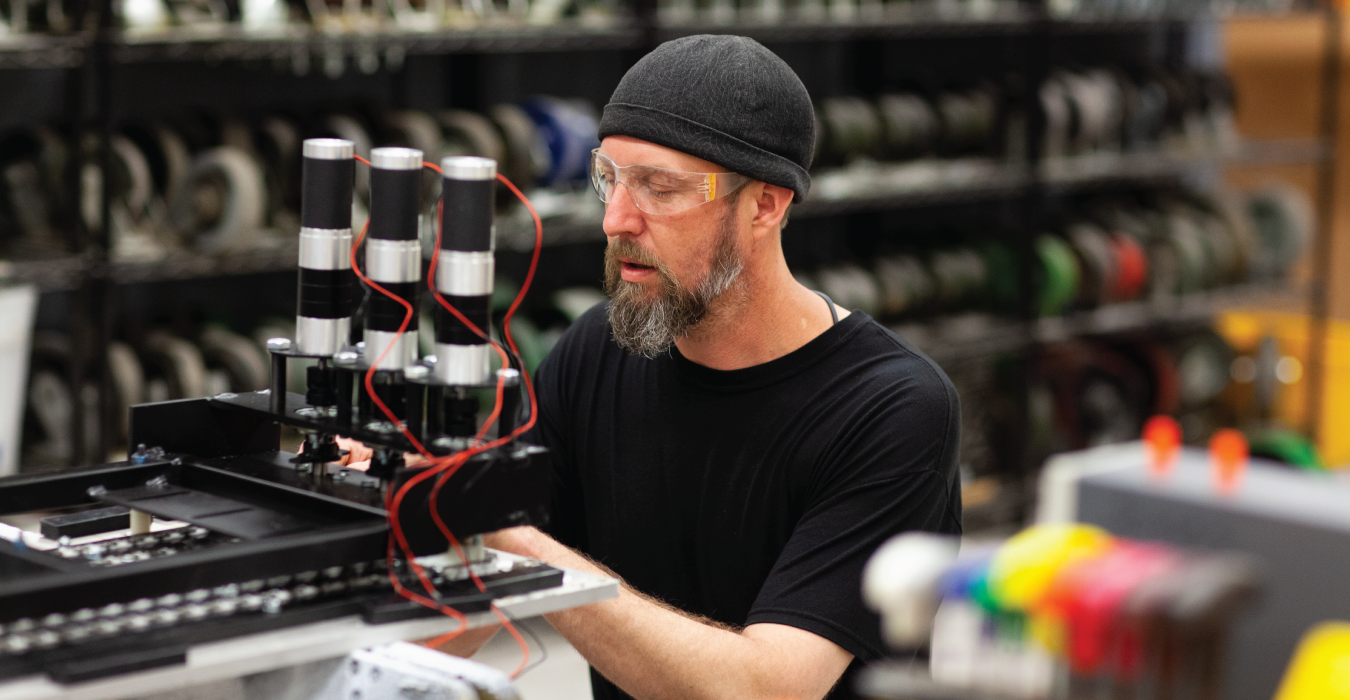Prototyping
Prototypes: The Secret to Custom Interactives that Are Reliable, Repeatable, and Durable
Chicago Scenic is a custom design and construction firm so nearly everything that we create is original. While that’s pretty cool, it also presents its own set of challenges.
Most of the time, and especially when we’re creating new and different interactives for museums, theme parks, or any other kind of client, we’re figuring things out while we create them. Our shop artisans work with detailed design drawings, of course, thanks to the experts in our technical design department. But nothing is proven until we prototype the first version of an interactive – a process that allows us to test a number of options. Let’s explore a few examples.
What Will the Weather Do to My Interactive?
Chicago Scenic’s project manager, Stefan Koniarz is overseeing the development of a number of interactives for a new Legoland theme park in Goshen, NY. The area’s weather serves up some extreme swings in temperature, so materials used in each attraction will be subject to snowfalls, freezing temperatures, and sunny, hot days. Also falling branches, leaves, lots of rain, and anything else Mother Nature serves up.
“One thing we’re testing for a guest-run interactive is whether the material we’re using for a chain track is durable enough to survive the weather,” Stefan says. “Because the material wasn’t intended for how we’re going to use it, we’re using a prototype to test if it can withstand whatever the weather brings,” he added.
Stefan knows that prototypes are the perfect ally; they help make failure a friend. Testing and retesting with prototypes helps us get to the best solutions.
Can Adults Solve These Interactive Games? And Can They Do It in the Allotted Time?
Our teams also create prototypes to help ensure that the final versions deliver the challenges they were designed to deliver. Chicago Scenic recently hosted a series of tests for a new set of Escape Rooms under development with Royal Caribbean Cruise Lines. Those Escape Room challenges are timed experiences; the prototype testing helps test whether the puzzles can be solved in the allotted time and whether or not they’re appropriate for various age groups.
Escape Room prototype testing also indicates whether the interactive challenges are reliable and repeatable. That’s important when those interactives are on a ship at sea continually. The performance of those interactives needs to be practically bulletproof.
Early prototypes are the key to ensuring that guests will interact with an attraction in the way the team always envisioned.
Will All These Components Work Correctly Together?
When Chicago Scenic and its project partners were developing the Chicago-based American Writers Museum’s "Word Waterfall", the Chicago Scenic team worked closely with partner Creative Technology o ensure that the interactive worked the way it was envisioned.
In Chicago Scenic’s shop, Senior Project Manager Jim Mallerdino recalls, “The team tested 3-4 different reflective commercial vinyl surfaces and ended up selecting the simplest fabrication technique. Printing black ink on a painted white MDF substrate. Since the interactive included projection technology, the team also spent time at CT’s headquarters to test various projectors for the best results.”
Will This Interactive Stand Up to Kid’s Play?
Kids are tough customers. They explore everything and they don’t hold back. With kid’s interactives, there’s no way to create a finished product that is 100% kid-proof. “On a ball run interactive I worked on for the Children’s Section in the Indian Trails Public Library in Wheeling, IL,” Jim Mallerdino says, “we created many different versions in the shop before we were happy with the result.
“Even so,” Jim recalls, “one day the client called. There was a problem. We sent a team member out and he found that one of the library’s young guests had somehow inserted a play can of tuna, from the play kitchen across the room, into the interactive’s Plexiglas tube. We didn’t test for that.”
Clearly, the key to successful prototyping is “Try, Try Again”. And when the prototypes are for a children’s interactive, we take our worst fears about making things last and multiply them times 10.


